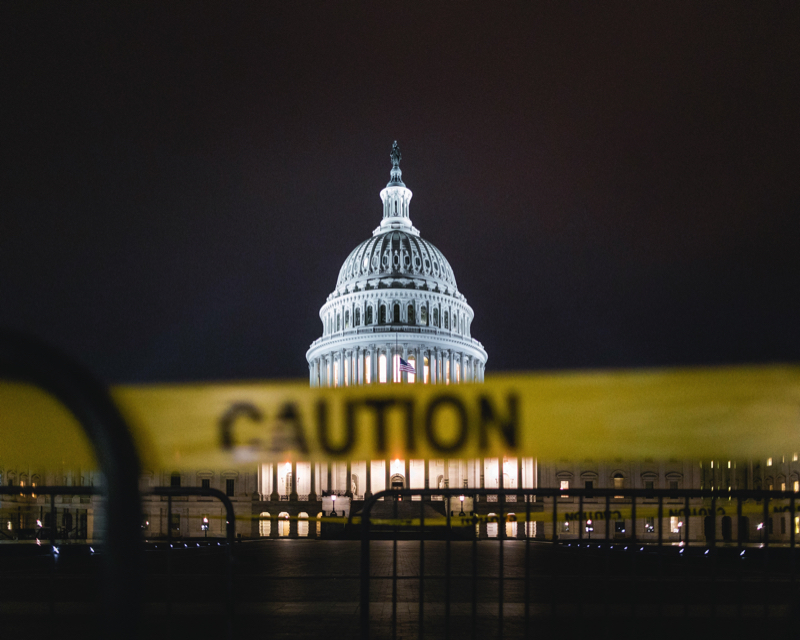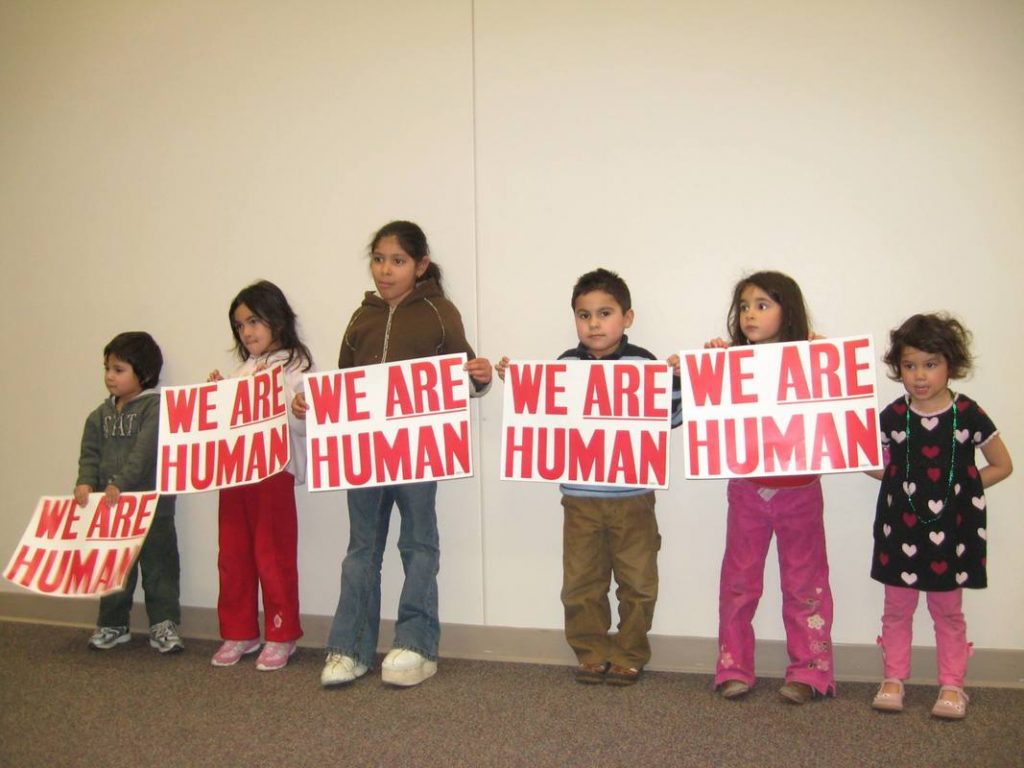
Editor’s Note: #WatchingforChange is an ongoing effort by Law at the Margins to promote accountability and meaningful change for various initiatives promised by the incoming Biden administration. If you or your organization is interested in contributing to the series, please contact us at lawatthemargins@gmail.com.
By:
Many are curious what President Joe Biden’s policies for the next four years look like. On his official campaign website, he lays out all of his plans, ranging from beating COVID-19 to protecting communities of faith across the United States. One policy area, which has grown increasingly contentious over the last decade, is immigration. On his website, Biden promises to end the prolonged detention of migrants and reinvest in a case management program. Specifically, he writes, “The Trump Administration has sought to circumvent the Flores agreement and hold children in detention indefinitely. But proven alternatives to detention and non-profit case management programs, which support migrants as they navigate their legal obligations, are the best way to ensure that they attend all required immigration appointments. These programs also enable migrants to live in dignity and safety while awaiting their court hearings–facilitating things like doctor visits, social services, and school enrollment for children. Evidence shows that these programs are highly effective and are far less expensive and punitive than detaining families. Biden will codify protections to safeguard children to make sure their treatment is consistent with their best interest and invest in community-based case management programs, including those supported by faith-based organizations such as Lutheran Immigration and Refugee Services, to move migrants into safe environments as quickly as possible.”
In order to understand whether Biden’s plan to end prolonged detention has the potential to be effective, it is important to understand the history of detention centers, the treatment of individuals in these detention centers, and alternatives to detention altogether.
A History of Detention in the United States
Prolonged detention, and detention in general, is an issue the United States has struggled with since the nineteenth century. Following the Indian Removal Act, which authorized the federal government to relocate tribes within state borders to unsettled land west of the Mississippi River, mass numbers of Cherokee Native Americans, along with slaves and free blacks, were forced into internment camps. These camps were designed to hold captured Native Americans until they began their forced 1,200-mile journey westward in a route known as the Trail of Tears. The individuals in these camps were brutalized and treated inhumanely, and poor sanitation in the camps led to the spread of deadly diseases such as measles and whooping cough. There may be a tendency to read about the internment of Cherokee Native Americans and write it off as a tragic event of the distant past, but there are many today facing a similar reality.

In 1997, a federal district court approved the Flores Settlement Agreement. This agreement ensures that immigrant children in federal custody are provided sanitary conditions, food and water, contact with family members, release from detention without unnecessary delay to parents or other approved sponsors, and the guarantee that if a child cannot be released from care, the child is placed in the “least restrictive” setting appropriate, based on his or her age and needs. Since its conception, the Flores agreement has been expanded on by federal judges to apply to all minors in detention, accompanied by their parents or not. This agreement, as nice as it sounds on paper, has often been either ignored or sidestepped by recent administrations.
Following the September 11, 2001 terrorist attacks, Congress passed the Homeland Security Act in 2002 which created the Department of Homeland Security (DHS). DHS absorbed the Immigration and Naturalization Service (INS) and divided it into three more agencies within DHS, including Immigration and Customs Enforcement (ICE). After 9/11, the US abandoned its policies of keeping migrant families together and instead detained adults and sent children to facilities operated by the Office of Refugee Resettlement.
Dismantling The World’s Largest Immigration Detention System
The United States operates the world’s largest immigration detention system. On any given day, the country has approximately 46,000 people in administrative immigration detention. Currently, ICE detains immigrants in more than 200 detention centers, with over 70 percent of people held in privately-run immigrant prisons. Immigrants in detention can be undocumented or documented immigrants, including people whose immigration status is not current, is expired, or is under review. Immigration detention is essentially the incarceration of immigrants while they await a determination of their immigration status or potential deportation.
The living conditions inside immigration detention centers are difficult. Most of the time, individuals are transported to detention centers in handcuffs, and many of their personal belongings are taken away. In some facilities, guards refer to individuals based on assigned numbers, and detainees are expected to wear jumpsuit uniforms. Detainees often sleep in a large room with fellow detainees where privacy is limited, and guards conduct several counts throughout the day. It is oftentimes difficult and expensive to make phone calls from detention centers, and each detention center has specific visiting hours and conditions for visiting guests. Similar to prisons, sometimes visitors may only be seen through plastic windows and other times visitors are permitted to sit across a table. Mail delivery is often slow and detention centers screen and inspect all incoming and outgoing mail. Interactions with staff at immigrant detention centers can also be unpleasant. The procedures for filing complaints about staff are limited and many staff are unresponsive or rude. Many times, detainees are denied access to lawyers. In some cases, detainees experience serious abuse and mistreatment such as a lack of medical care, physical violence, sexual abuse, unsanitary conditions, and lack of food and water.
Further decreasing the accountability of detention centers is the fact that many of them are privately run. The past few decades have seen a dramatic increase in detention, and in order to manage the growing number of detainees, ICE has begun contracting with private facilities. These facilities are incentivized to cut costs through getting rid medical staffing and they are incentivized to maximize profit through exceeding capacity. Moreover, without the government being directly involved, human rights abuses often go unmonitored and unreported.

So, what are some alternatives to immigration detention? ICE has a range of options that can be implemented in lieu of detention, including, release on own recognizance, parole, supervised release, and electronic monitoring, but many of these options are underutilized. The option of releasing detainees on their own recognizance means that those who are not a threat to public safety and present no flight risk may be released, which does not require posting a bond or complying with supervision requirements. This option is the least expensive and it avoids restricting the liberties of detainees. Another option is parole, which can be granted after a person is deemed to not be a flight risk and poses no danger to the community, and has a credible fear of persecution or torture. Supervised release is another alternative that does not discriminate against those in immigration detention centers. Supervised release involves being released under certain conditions which include being required to check in regularly with ICE and having a curfew. Studies have shown that supervisory programs can be very effective in both the immigration and criminal contexts. The most restrictive and invasive alternative to detention is electronic monitoring. This is done through a GPS monitoring device attached to participants’ ankles or telephonic reporting with voice recognition software. Although electronic monitoring is a very cost effective alternative, it is highly invasive of individuals privacy. There are also many community-based alternatives to detention. Many faith-based organizations can provide case management, legal services, and holistic support to those in detention centers.
A final option, and one that has been gaining increasing support, is to abolish ICE.
Biden’s Plan to Change Immigration Policy
Part of Biden’s plan to end prolonged detention includes his promise to reinvest in a case management program. From January 2016 to June 2017, the US government implemented the Family Case Management Program. Though intended to span five years, this program was terminated in 2017, only one and a half years into its implementation. The purpose of the program was to demonstrate that programs focused on case management support for immigrants in proceedings could function well. The program achieved a 99% compliance rate with ICE and immigration court requirements at a fraction of the cost of detention and supported hundreds of families in finding stability in their communities. The program supported them with their immigration requirements and began to prepare them for the outcomes of their case. If Biden chooses to reinvest in this program, it could serve thousands of immigrants, save millions of dollars, and increase the efficiency of the immigration system.
Under former president Donald Trump, the treatment of immigrants in detention centers worsened. Although Trump simply continued previous practices, he implemented numerous measures and acts which significantly worsened the treatment of detainees. In a report published by the American Civil Liberties Union, Human Rights Watch, and National Immigrant Justice Center, the growth of immigrant detention centers and the hurdles faced by individuals in these centers has been exposed. Among the key findings of the report is the fact that for the fiscal year 2021, the Trump administration has requested that taxpayers fund ICE 4.1 billion dollars, with the intent to expand ICE’s daily detention capacity to 60,000 people on any given day. Additionally, since 2017, 39 adults have died in ICE custody or immediately after being released, and medical expert analysis of these deaths have found that subpar care contributed to them. According to a publication by Newsweek, during Obama’s time in office, the number of detained migrants was generally between 30,000 and 40,000 on any given day. Under Trump, the average has been nearly 46,000, and that number has been rising. Moreover, hundreds of migrant minors have been held by Customs and Border Protection longer than the 72 hours legally allowed. Under Trump’s Zero Tolerance Policy, thousands of migrant children were separated from their parents. The practice of separating children from their families was not something new introduced by President Trump. This occurred under the Obama and previous administrations, but under previous administrations such decisions were rare and were not used to deter migrants from entering the country. It is clear that since Trump took office, the treatment of undocumented immigrants and asylum seekers in detention centers has never been worse.
So, the question remains: how successful will Biden be in ending prolonged detention and reinvesting in a case management program. Will he be able to successfully implement alternatives to detention? That is something only close attention to the Biden administration and time can tell.
Resources:
Washington Post: Biden’s Immigration Platform
Law at the Margins: We the Immigrants
Law at the Margins: Ending TPS: A Continuation of Trump’s Anti-Immigrant Administration
Law at the Margins: Our Obligation to Heal Trauma from Immigration Policies




